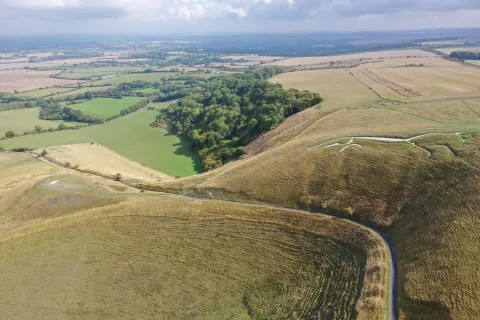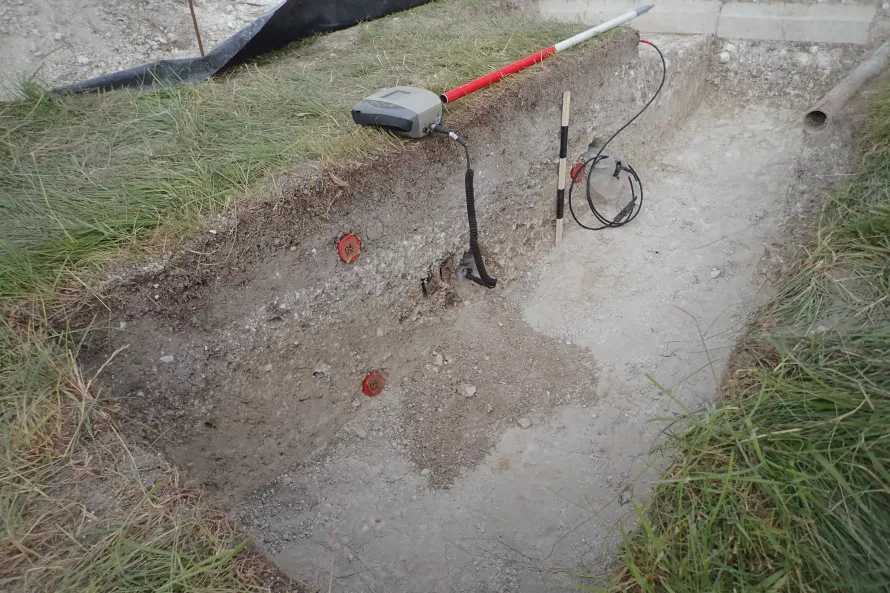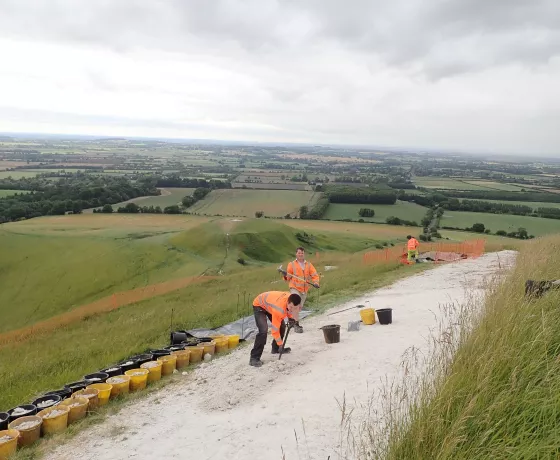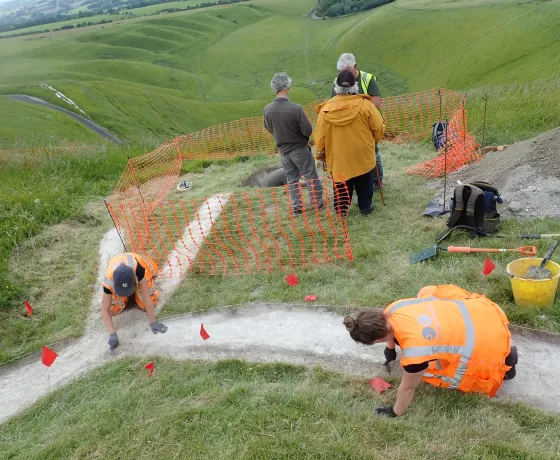Optical Stimulated Luminescence is a method of dating ancient buried material such as geological sediments. Scientific interest in luminescence goes back a long way. Robert Boyle (1627 – 1691), the father of modern chemistry, researched luminosity using rotting fish, insects and the pisspots of London’s Pall Mall. By rubbing a large carbuncle, a type of diamond, he observed the glow of electrons as they escaped their traps. This observation laid the foundation of modern thermoluminescence dating.
OSL dating is a method of dating deposits of geological material. Electrons are trapped in the crystalline structure of carbon minerals, such as quartz and feldspar. When the minerals are transported, for example by water or wind and exposed to sunlight, the electrons escape and the luminosity clock is set to zero. If the minerals are then buried, the so-called dosimetric clock is reset and the minerals are exposed only to low level radiation from the surrounding sediments or rock. The electron trap will fill again at a rate determined by background intensity – low – in the case of chalk.
The samples taken from the White Horse by Mike Tite and Julie Rees-Jones of the Oxford Lab were some of the first from an archaeological site. The results dated the earliest layer in the Horse’s belly to between 1380 – 550 BC. This date is not very precise, but indicates that the Horse belonged to the Late Bronze Age or Early Iron Age rather than the later periods suggested by other scholars.
Now, thirty years later OSL dating has become more sophisticated and, potentially, more accurate. We hope that by taking new samples we can refine this estimated date and better understand when and why the White Horse was created.






